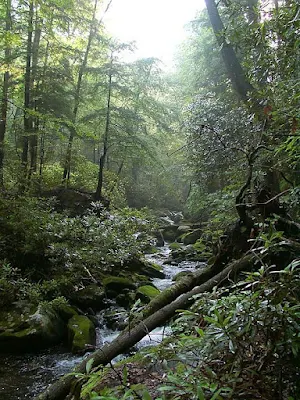20+ Interesting Facts About Rainforests
- The main features of rainforests are tall trees, several layers of plants, and abundant rain. They grow in areas with warm and wet climate throughout the year.
- There are two main types of rainforests: tropical and temperate. Tropical rainforests are generally present in Central and South America, Southeast Asia, and western and central Africa. Temperate forests are usually present in coastal and mountainous areas in western North America, Chile, southern Australia, New Zealand, Japan, Norway, and the UK.
- Rainforests are the oldest living ecosystem on Earth. Some of these are tens of millions of years old.
- Rainforests receive the heaviest amount of rainfall among all biomes. Tropical rainforests receive 200-1000 cm (80-400 in.) of rain per year, while temperate rainforests get 150-500 cm (60-200 in.) of rain annually. Temperate forests compensate for less precipitation through dense fog.
- Daintree Rainforest (180 million years) in Australia, Borneo Lowland Rainforest (140 million years) in Borneo (Indonesia, Malaysia, and Brunei), and Taman Negara (130 million years) in Malaysia are the three oldest rainforests. Yakushima Forest (7,000 years) in Japan is the oldest temperate rainforest. (Source)
- The Amazon Rainforest in South America and the Congo Rainforest in Central Africa are the largest rainforests in the world. Both of these have the largest primary forest area and the total tree cover in the world. (Source)
- The
temperature in tropical rainforests remains between 21 C and 30 C, with a high
humidity between 77% and 88%. However, the temperature in temperate rainforests
is slightly milder. There is a slight variation in their annual and daily
temperatures.

Temperate rainforests have milder temperatures than tropical rainforests - Both tropical and temperate rainforests contain many epiphytes - plants that make their home on trees and other plants. These include ferns, moss, lichens, bromeliads, and orchids.
- Rainforests are known as the “Lungs of Our Planet” as they reduce pollutant levels and generate 20% of the oxygen on Earth. Their deforestation increases climate change because this contributes 15% of global CO2 emissions. (Source)
- Rainforests usually have four layers: emergent, canopy, understory, and forest floor. All these layers contain separate plants and animals that have adapted to the requirements of that area.
- Trees in the emergent layer can grow up to 100 feet or taller. A single tree can store carbon equal to the amount present in 500 smaller trees. These plants disperse their seeds through the wind. This layer contains mostly flying and gliding animals such as eagles, monkeys, bats, butterflies, and snakes.
- Trees in the canopy layer form roof over the forest due to their umbrella-like shape. Therefore, they prevent most sunlight and rain from the lower layers. They harbor the highest number and species of animals, including numerous insects, mammals, birds, etc. These animals eat the fruits of these trees and thus participate in dispersing their seeds.
- Studying the canopy layer of rainforests is difficult due to its elevation. However, a specific crane inside these forests has resolved this issue for scientists. There are several such cranes in various rainforests around the globe for research purposes. (Source)
- Rainforests cover only 6% of the Earth’s surface. However, they are rich in biodiversity and contain more than half of all the plant and animal species on the planet.
- The understory layer receives only 5-10% of the sunlight that reaches a rainforest. It contains shorter plants with large leaves. These plants can survive low-light environments, which makes them ideal as houseplants. A unique feature in most animals of this layer is their ability to camouflage.
- Only 2% of sunlight reaches the forest floor layer of rainforests. This layer consists of fungi alongside plants and animals that feed on decaying matter. Famous mammals of this layer are armadillos, anteaters, wild pigs, and leopards.
- A rainforest atop Mount Lico in Mozambique is the least disturbed rainforest on Earth. Non-locals discovered this forest in 2014 after viewing it from a satellite. (Source)
- A unique feature of rainforests is causing rainfall on local and global levels through transpiration (releasing water from their leaves). Therefore, deforestation of these rainforests can cause droughts even in far-flung areas. (Source)
- Rainforests have poor soil quality compared to other biomes. It is due to the soil’s acidic nature, the high amount of clay particles that do not trap nutrients, the rapid decomposition of dead organic matter, and the high volume of rain. (Source)
- There are several tribes in the rainforests of South America, central Africa, and Southeast Asia. They have settled in these areas for thousands of years. Some of these are still “uncontacted” tribes. (Source)
- According to estimates, humans have destroyed nearly 50% of rainforests in a century. These forests provide food, medicinal plants, and other advantages to around 300 million people. The current deforestation rate can eliminate rainforests in only 100 years. (Source)
- A fungus on the rainforest floor smells like sewage or rotting meat. The stinkhorn fungi can also grow on wood in gardens. (Source)



Comments
Post a Comment